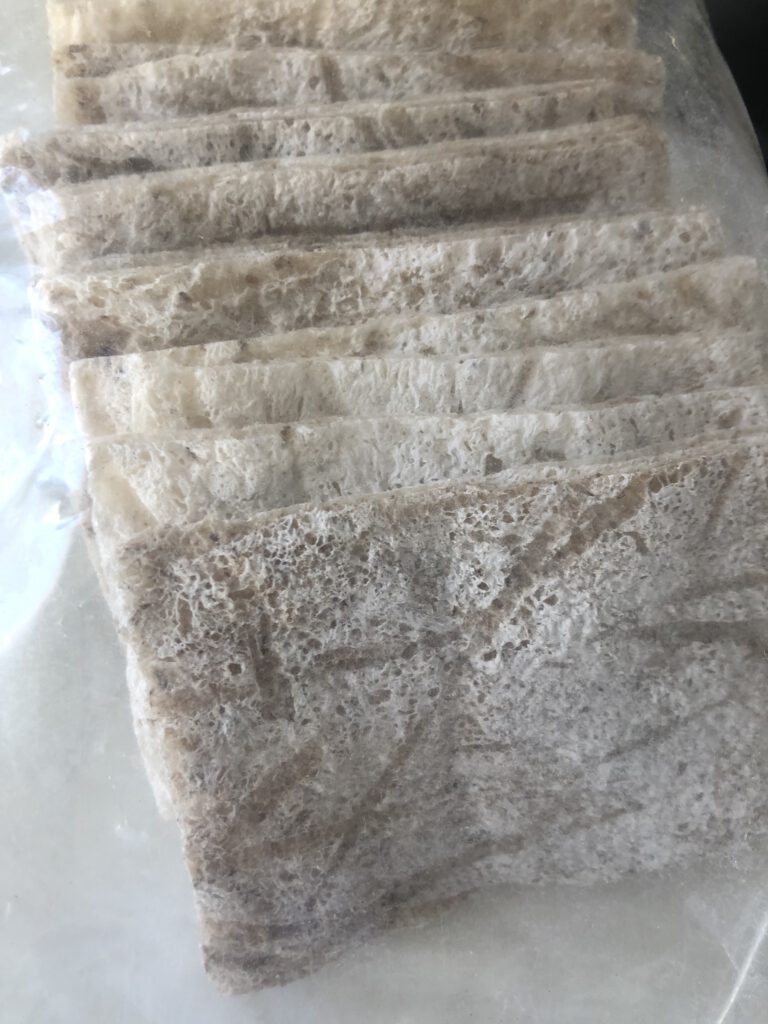
Freeze Drying or what to do during Winter.
Who first applied Freeze Drying techniques on Foods is unclear.
The Incas are said to have used it on otherwise inedible Potatoes in the 13th century. The Japanese claim to have used it during the Kamakura period (1185-1333) on Tôfu but perfected only during the Warring States period (1477 – 1600 env.). The technique involved keeping foods outside in the cold winter, which would freeze at night, thaw under the sun during day time. This would take place for around a week and made long term storage of foods possible. It would also reduce the weight, which would be practical, especially as a campaign food during wars.
The foto shows Shimikonnyaku 凍み蒟蒻, Freeze dried Amorphophallus konjac gels. Slices of Konjac were put out on straw outside, traces of which can be seen on the surface. Mainly used for simmering dishes. This technique was developed before dried Konnyaku flour became available in 1776 as only with this flour, Konnyaku Gels could be produced all year round.
Shimikonnyaku is a rare food now, as fresh Konnyaku is easy to find. It can be more easily be found in Ibaraki prefecture, where it was traditionally produced. As it has lost in importance non-food applications like use as a washing sponge similar to Luffa have been promoted.